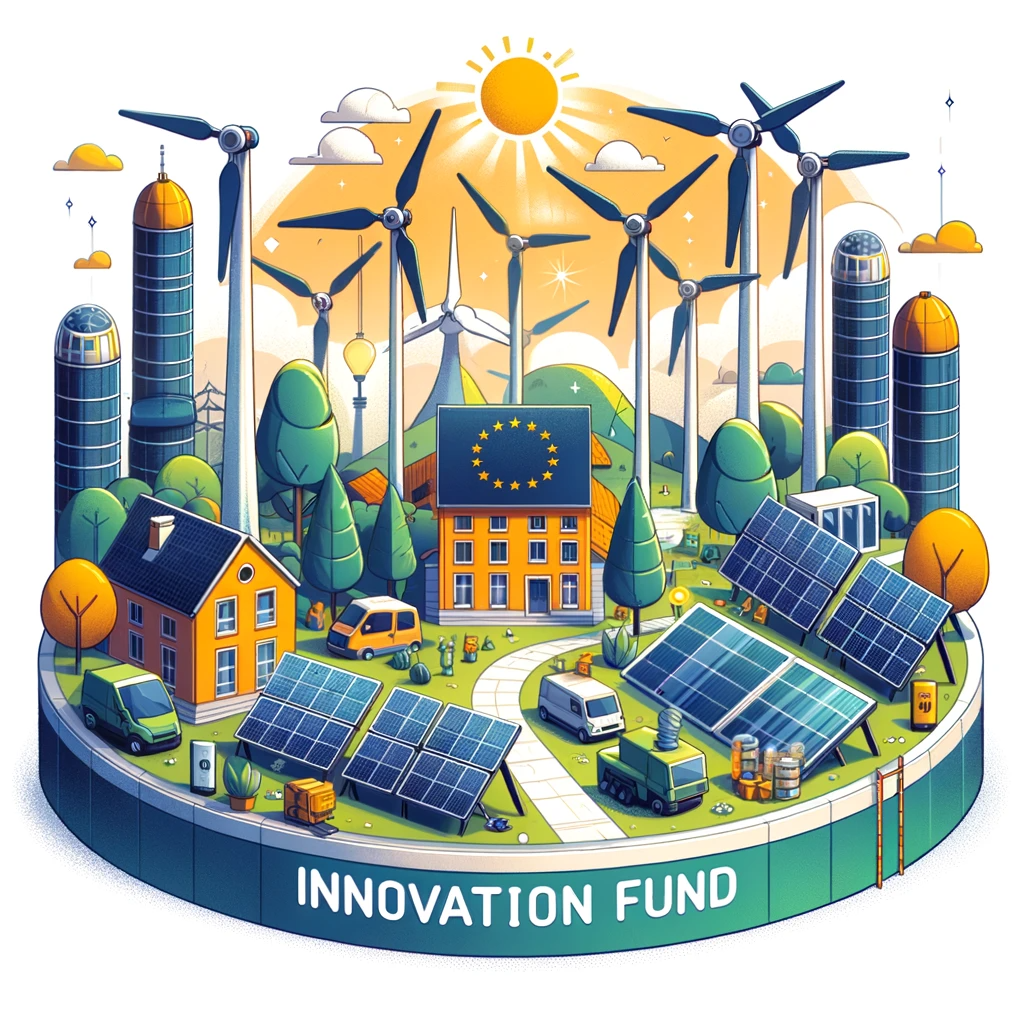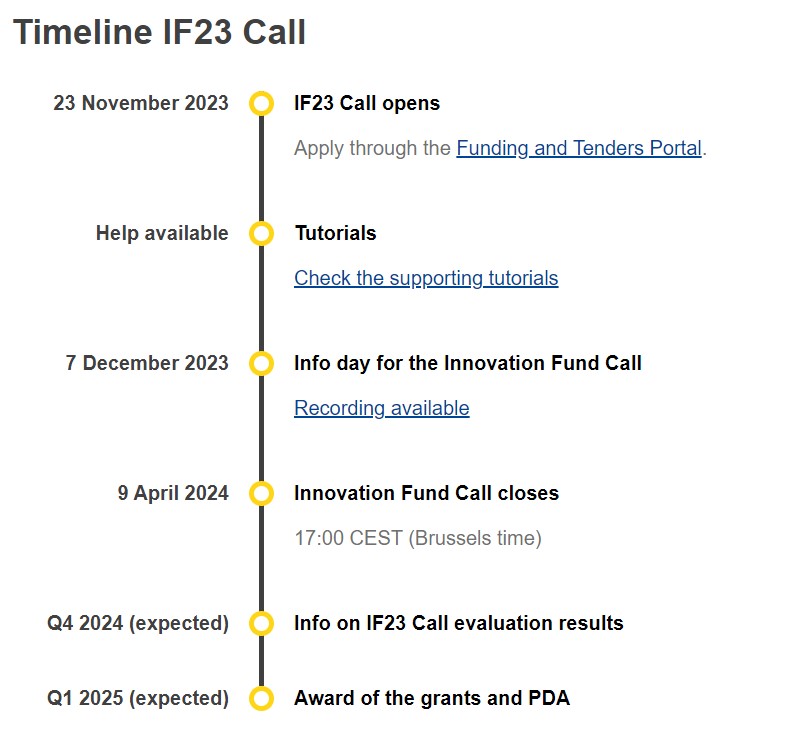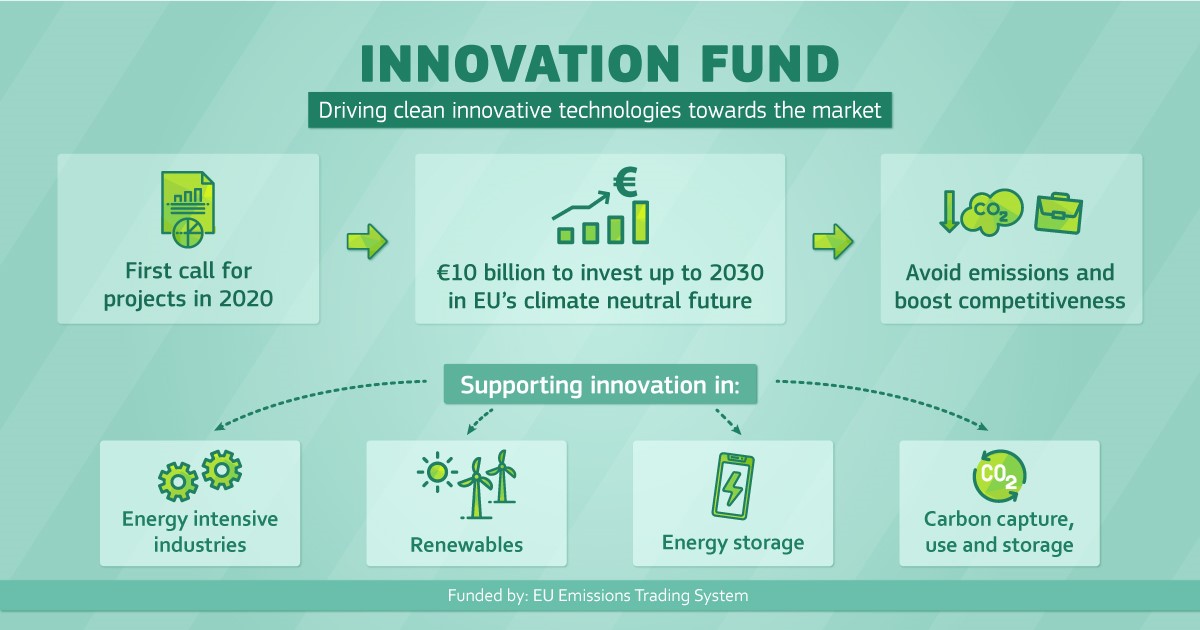
What is the Innovation Fund?
The Innovation Fund, sustained by the proceeds from the EU Emissions Trading System, stands as one of the most substantial global funding programs. It primarily aims to support the development and implementation of low-carbon technologies by EU-based companies.
This Fund is dedicated to advancing cutting-edge clean technologies and major flagship initiatives that deliver European value and are capable of significantly reducing emissions and greenhouse gases.
The scope of projects under the Innovation Fund is diverse, spanning across a range of pioneering technologies in sectors like energy-intensive industries, renewable energy, energy storage, carbon-neutral transportation and building solutions, hydrogen, as well as carbon capture, utilization, and storage. The projects should be based in the European Union and the European Economic Area.
Which sectors and projects are financed by the Innovation Fund of EU?
Renewable energy sector
The renewable energy sector encompasses the following categories:
- Wind energy
- Solar energy
- Geothermal energy
- Ocean and wave energy
- Bionergy
Examples of projects:
- Advanced biofuels
- Thermal Towers
- Next Generation Turbines
- Floating photovoltaic installations
- Enchanced geothermal systems
- Tidal and wave energy technologies
Energy Storage
The Innovation Fund supports projects of hydrogen production and its use for energy storage
Carbon Capture and Storage (CCS)
There are mainly two type of projects:
- Full chain CCS projects
- Part chain CCS projects, with secured storage contracts.
Carbon Capture and Utilisation (CCU)
The Innovation Fund of EU will finance projects that capture CO2 and other carbon containing gaseous effluents and converting them to usable fuels os products.
Cross-cutting
The following projects are eligible for an EU subsidy:
- Any combination of the activities mentioned above
- Carbon capture from several industrial plants, transport of CO2, utilization and storage
- Low-carbon hydrogen use and storage and infrastructure projects
- Hybrid renewable energy systems
Innovation Fund of the EU: Budget
The EU's Innovation Fund (IF) is set to allocate approximately €40 billion from 2021 to 2030. This funding is dedicated to the commercial demonstration of novel low-carbon technologies. Its primary goal is to introduce industrial solutions that aid in Europe's decarbonization and facilitate its progression towards climate neutrality.
The areas of concentration for the Innovation Fund include:
- Groundbreaking technologies
- Major flagship initiatives
- Innovative solutions for low-carbon emissions
- Smaller-scale projects with the potential for substantial emission cutbacks.
What are the differences between Innovation Fund and Horizon?
| Innovation Fund | Horizon | |
| Objective | Build and operate large-scale industrial assets with innovative cutting-edge technologies | Research and development (R&D) Projects |
| Applicants | Single EU-based companies | At least 3 companies from at least 3 EU countries |
| Selection Criteria | Business, technical and financial availability | The main focus is on research |
| Phases of grant pay-out | Lump-sum payments upon phases (i.e. milestones) and performance | With the submission of the final report |
| Calls for the fund | Contents and conditions of calls are adjusted on annual basis | 7-year program |
Timeline of the Innovation Fund

Which are the criteria for participating in the project?
Projects vying for selection under the Innovation Fund are evaluated on several key criteria:
- Effectiveness in reducing greenhouse gas emissions.
- Degree of technological or process innovation.
- Level of project development and readiness.
- Potential for replication in other contexts.
- Cost-effectiveness and economic viability.
Each call for proposals outlines a specific scoring and ranking system used for evaluation.
Innovation Fund Budget

The Innovation Fund is designed to cover as much as 60% of any related project.
These funds can be supplemented with other forms of financing, such as national grants.
The allocation of these grants will be adaptable, depending on the financial requirements of the project and the progress marked by specific milestones.
A portion of the grant, up to 40%, can be allocated based on these pre-set milestones, even before the project is fully operational.
Once financial closure is reached, 40% of the total grant can be retained, regardless of whether the project achieves its performance goals. However, if the project does not deliver the expected CO2 reduction, the remaining 60% of the funding must be reimbursed proportionally to the shortfall in performance.
Legal Framework of the Innovation Fund
The Innovation Fund was established under Article 10a(8) of Directive 2003/87/EC. It aims to foster innovation in low-carbon technologies and processes throughout all EU Member States.
Events and Webinars
The European Commission and the CINEA (Climate, Infrastructure, and Environment Executive Agency) regularly host events and webinars. These sessions focus on the Innovation Fund, presenting key learnings and relevant policy updates.

